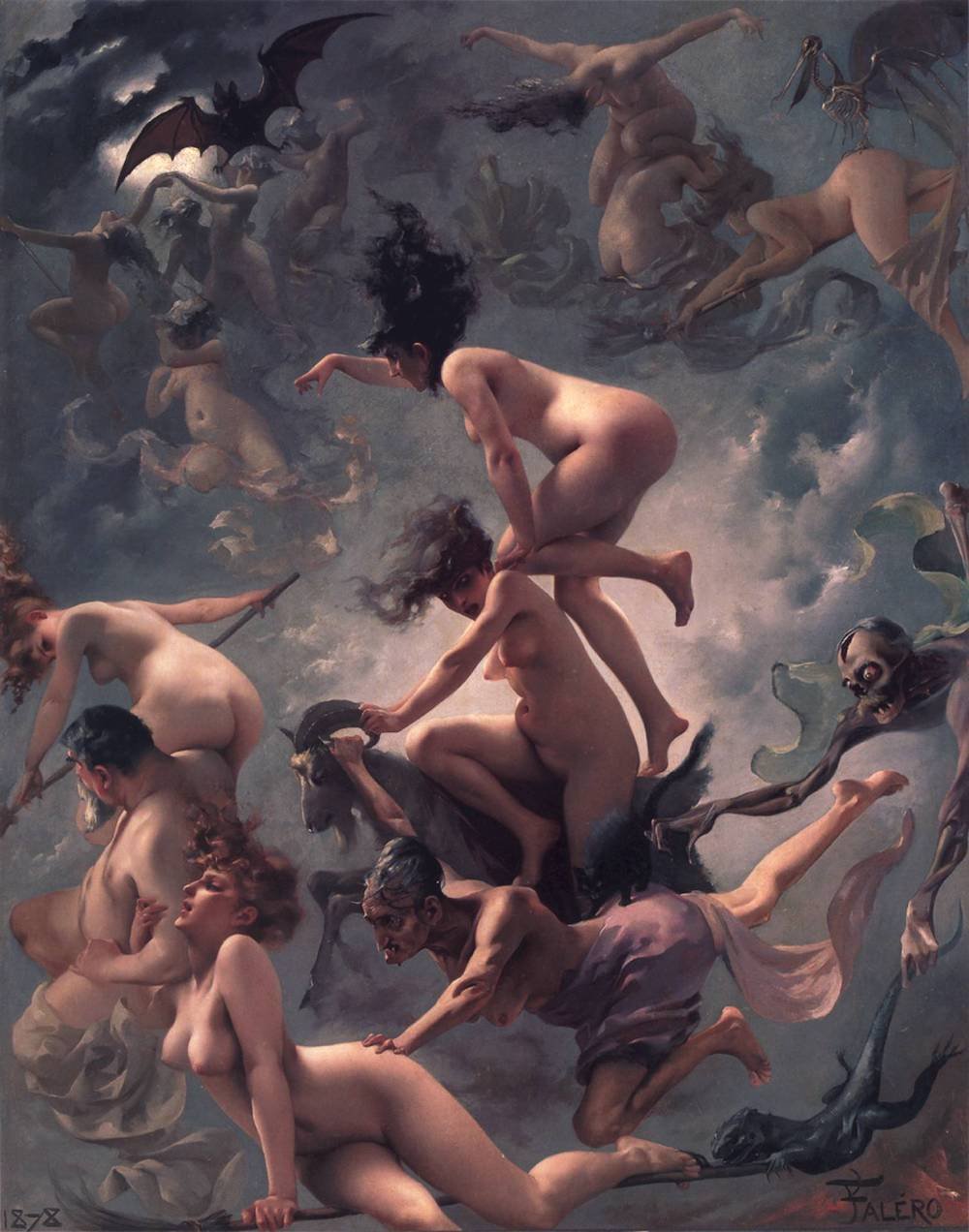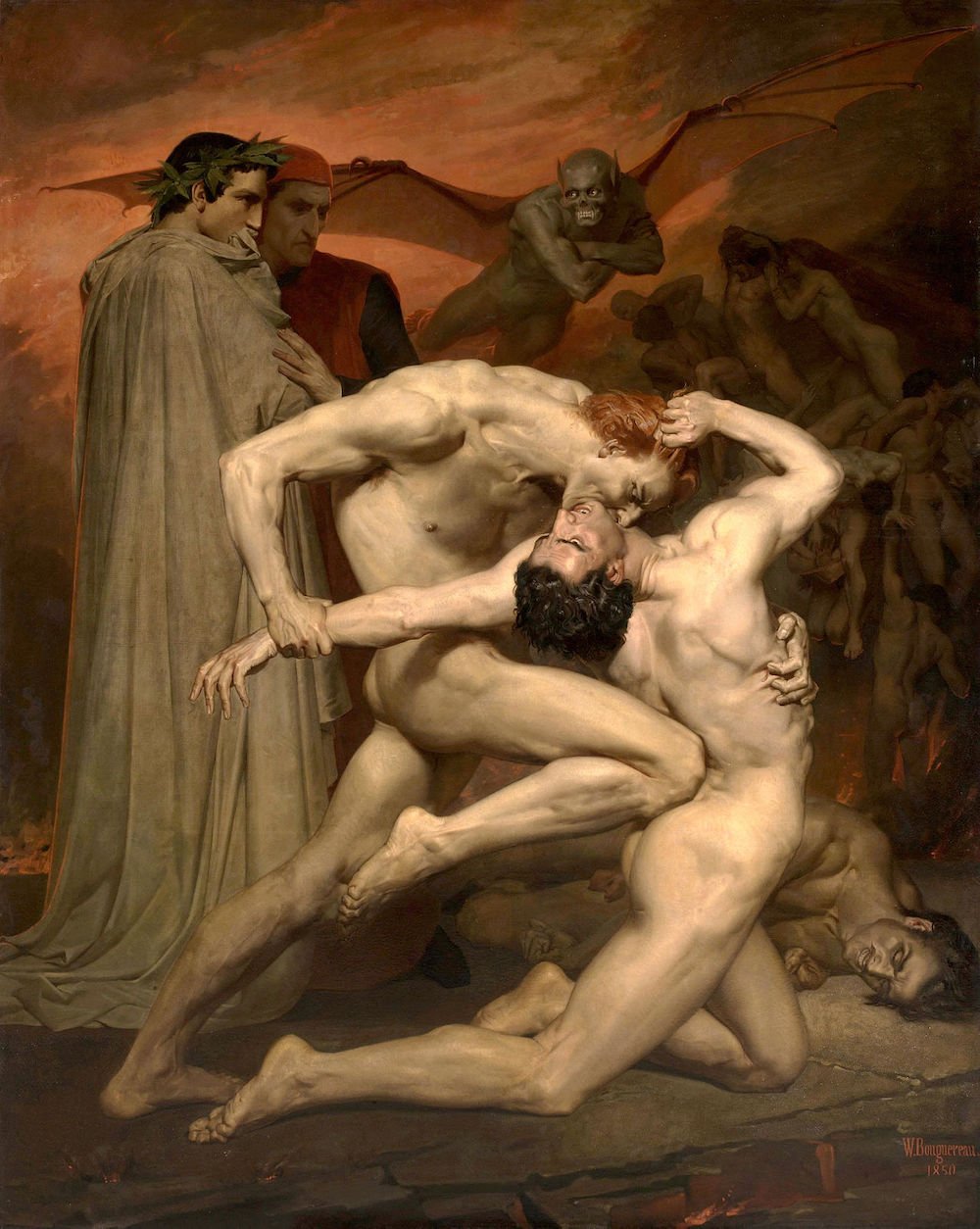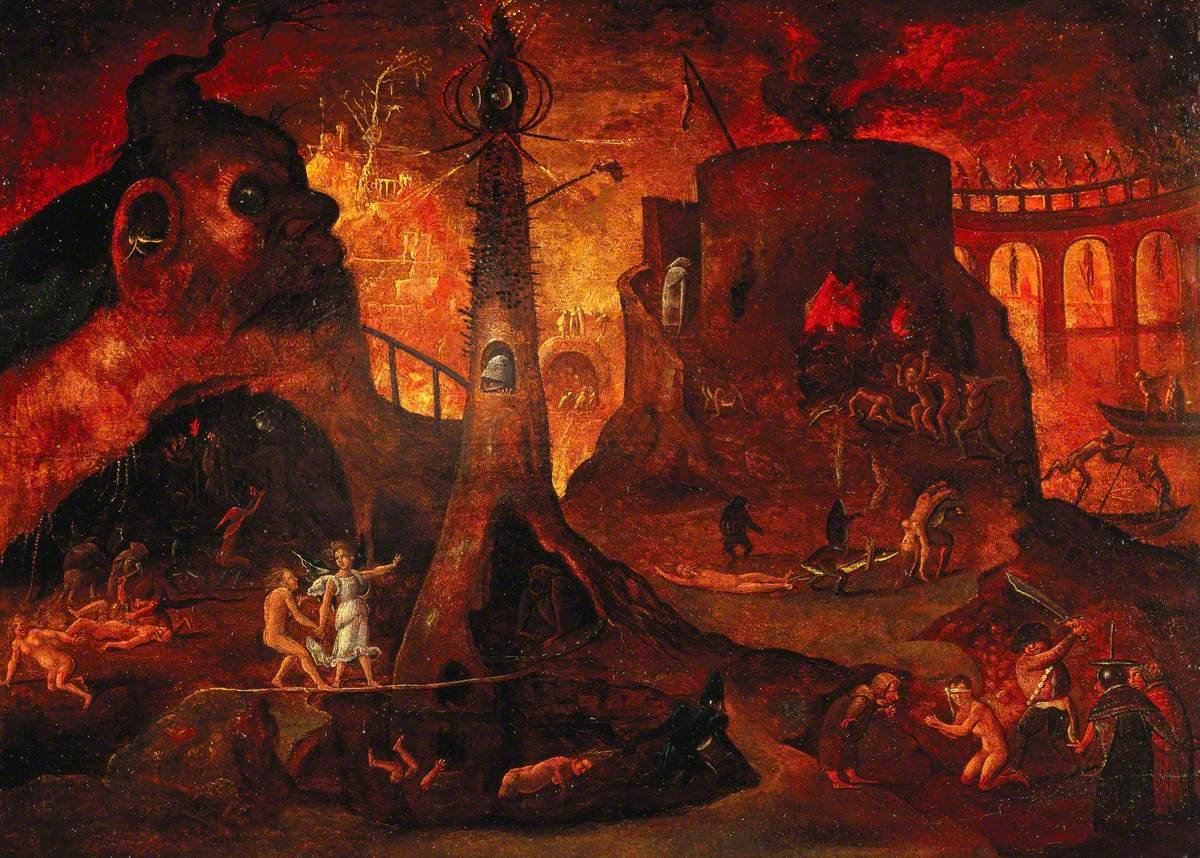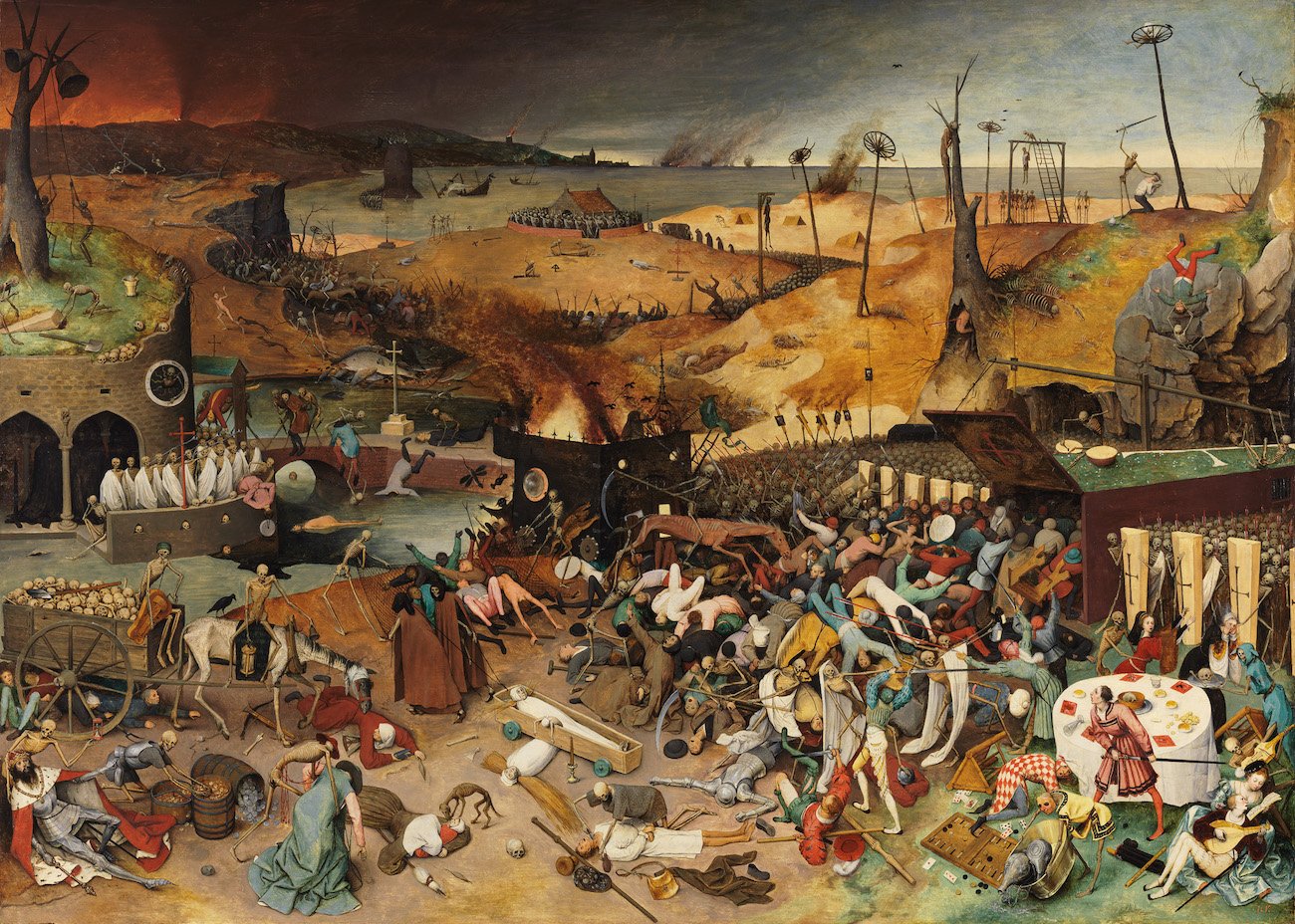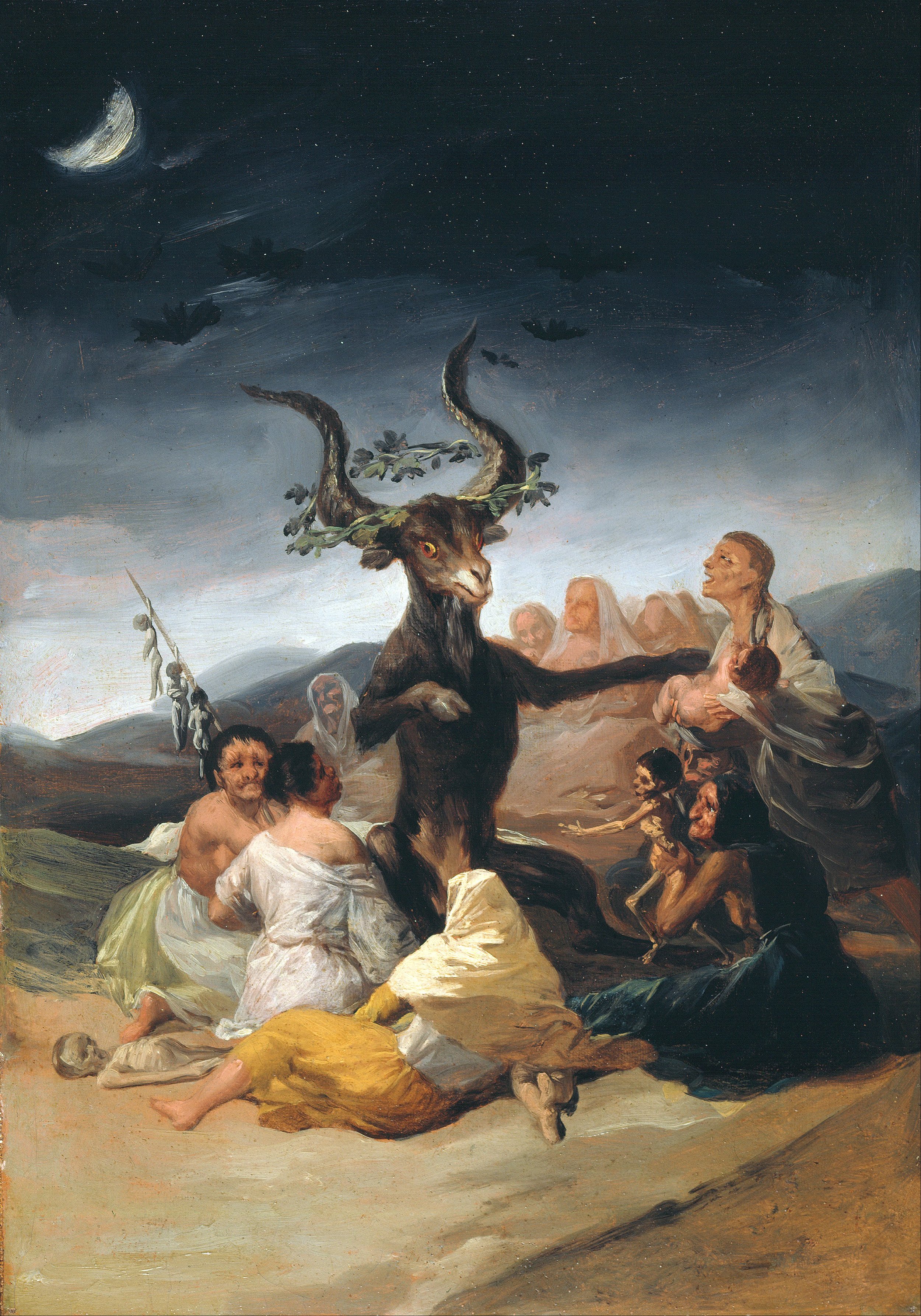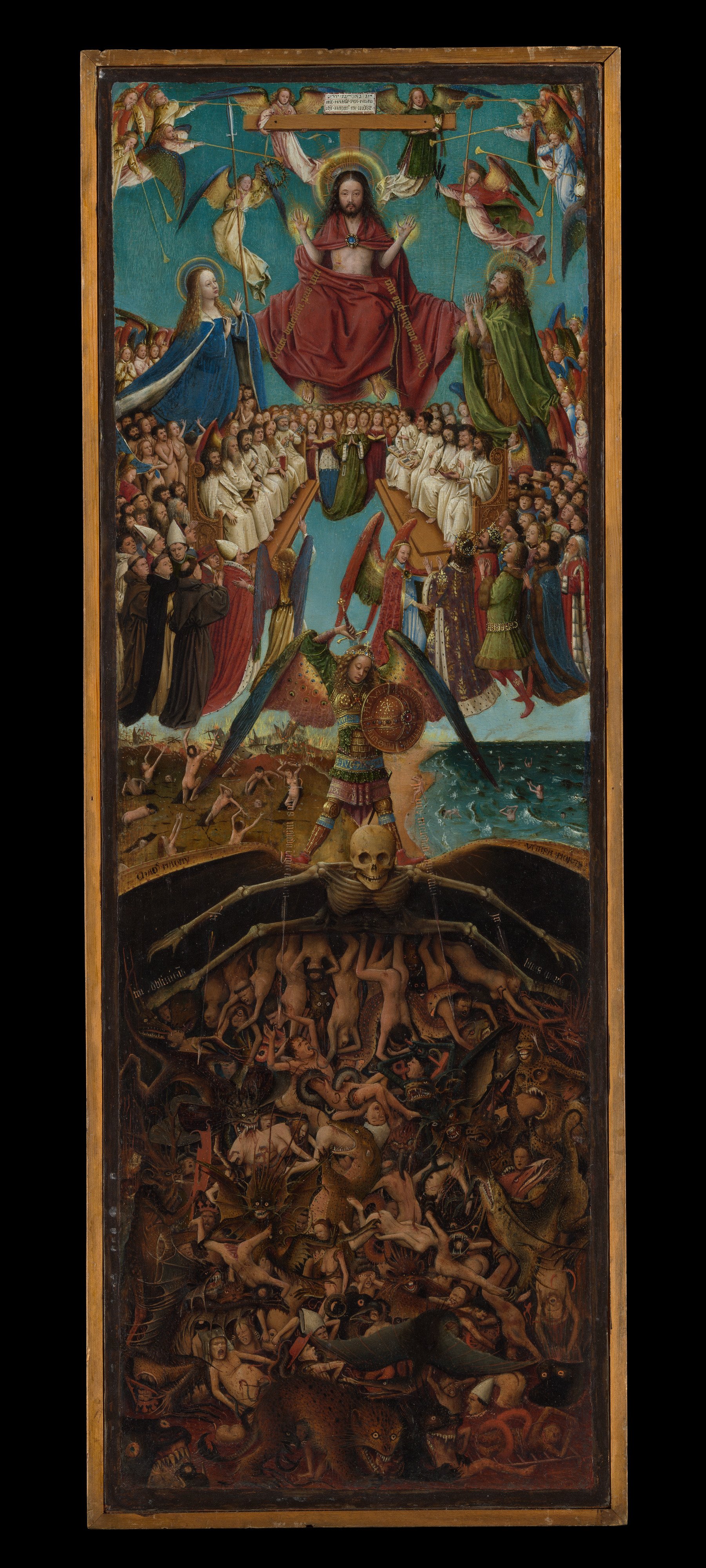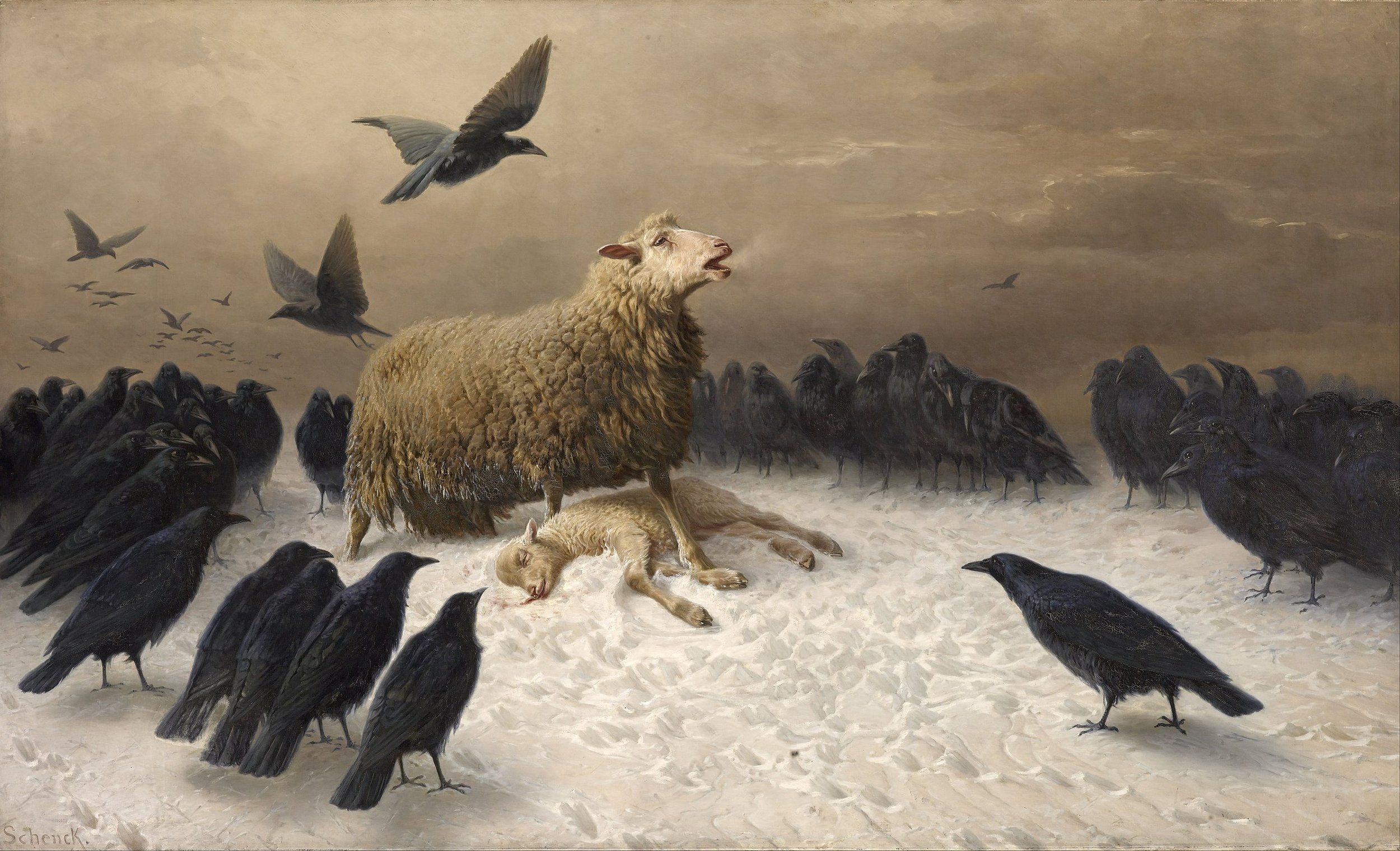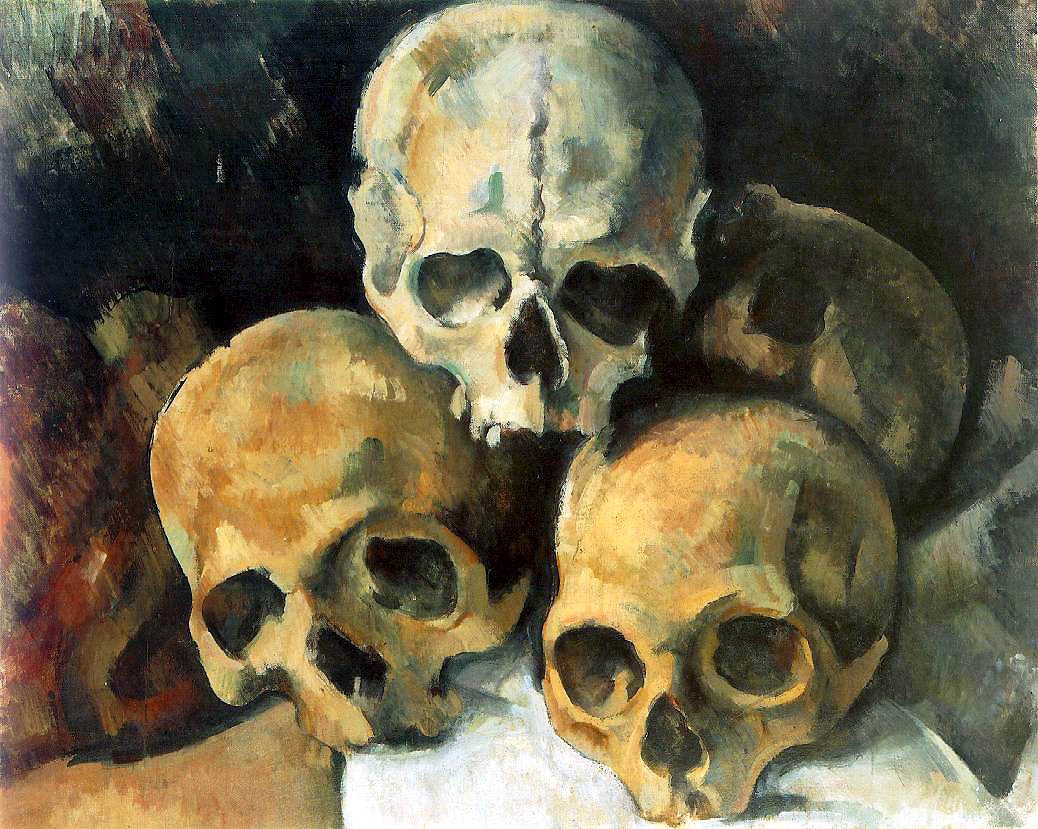13 Spooky Paintings: October Pick of the Month
Happy Halloween to those who celebrate! To get you in the mood for the spooky season, we decided to share some of our favourite hair-raising paintings. From witches and monsters, ghosts and ghouls, we’ve got you covered!
Vote for your favourite painting in the poll at the bottom of this page or here!
Witches going to their Sabbath (1878) Luis Ricardo Falero
Luis Ricardo Falero, Witches going to their Sabbath, 1878, private collection. (Image: Wikimedia Commons).
This fantastical and erotic painting depicts a frenzied scene of witches making their way to their Sabbath. The figures are shown in a variety of ages, from beautiful slender young women to ghoulish crones. Here, the grotesque and the concupiscent intertwine just as the flurry of nude bodies. As seen in the lowest figure, the broom - an iconic mode of transport for witches - is being ridden with its bristles facing forward. This original positioning is connected to the promiscuous reputation of witches. There are many similarities between this and another work by Falero, whose subject matter is also witchcraft. In the 1880 work, Festival of the Witches, the central figure bears a resemblance to multiple here, and the bat silhouetted against the moon in the top left hand corner is a near identical replication.
2. Head of Medusa (1618) Peter Paul Rubens
Peter Paul Rubens, Head of Medusa, 1618, Kunsthistorisches Museum, Vienna. (Image: Wikimedia Commons).
One of the most formidable monsters in Greek mythology, Medusa was a gorgon who, in place of hair, had snakes. Best known for her fierce gaze which would petrify those it met, she was slain by the hero Perseus. Her decapitated head seeping blood is the subject of this baroque painting. Her once powerful eyes are bulging from her final attempt at turning her killer to stone. Surrounding Medusa are several creatures, including multiple species of reptiles: snakes, a lizard and an amphisbaena (a mythological beast), as well as a scorpion and pair of spiders. Some of them stare out towards the viewer evoking a feeling of unease. Rubens did not execute the painting alone, but enlisted the assistance of Frans Snyders, a master in painting animals.
3. Dante and Virgil (1850) William-Adolphe Bouguereau
William-Adolphe Bouguereau, Dante and Virgil, 1850, Musée d’Orsay, Paris. (Image: Wikimedia Commons).
This macabre scene illustrates an episode from the literary masterpiece The Divine Comedy by the Florentine poet Dante. The author is shown in his characteristic red outfit standing alongside his guide into the Underworld, the Roman poet Virgil. They are an audience to a gruesome fight between the damned souls of Capocchio (an alchemist and heretic) and Gianni Schicchi (a fraudster). Locked in an eternal battle, Gianni is shown biting his opponent on the neck vampirically. The painting was well received by critics who were especially impressed by the artist’s depiction of muscles.
4. An angel leading a soul into hell (c.1450-1516) Hieronymus Bosch (follower of)
Hieronymous Bosch (follower of), An angel leading a soul into hell, c.1450-1516, Wellcome Collection, London. (Image: ArtUK).
Another artist’s impression of hell is this painting by a follower of Hieronymus Bosch. The narrative shows a new soul being led into their eternal damnation by a winged and cupid-like angel, whose brilliance juxtaposes against the surrounding inferno. The rotunda to the right emulates the tomb of the aforementioned poet Virgil, whose epic poem, the Aeneid, details the protagonist’s journey through the underworld. The artist’s dominant use of red symbolises the burning concept of hellfire. Both the foreground and background show scenes of souls being tormented by monsters, who are differentiated by their clothing as opposed to nudity, giving the viewer a sense of the perpetual anguish.
5. The Triumph of Death (c.1562) Pieter Bruegel the Elder
Pieter Bruegel the Elder, The Triumph of Death, c.1562, Museo Nacional del Prado, Madrid. (Image: Wikimedia Commons).
Painted by one of the most significant Flemish artists, this artwork depicts a battle between death and life. Death’s successful attack is being carried out by a swarm of skeleton soldiers, who enact complete destruction. The group is led by a skeleton waving a flag on the central horse. All but the two figures in the lower right hand corner are embroiled in the fight. The two lovers stare into each other’s eyes, oblivious to the havoc closing in on them, to which they too, will succumb. The landscape is barren and devoid of life, with decimated trees bearing ringing bells. The artist used a red tint throughout the work to create a hellish atmosphere. The painting was heavily influenced by both the works of Hieronymus Bosch and the medieval dance of death motif.
6. The Nightmare (1781) Henry Fuseli
Henry Fuseli, The Nightmare, 1781, Detroit Institute of Arts, Detroit. (Image: Google Arts & Culture).
This fearful painting truly is the stuff of nightmares. It portrays a beautiful woman asleep, being plagued by night terrors. The implicit sexuality of the scene is shown through the woman’s body, which, though covered, is revealed by her clingy nightgown. The grotesque figure sitting on her chest is an incubus. The legendary creature was a monster whose goal was to be sexually intimate with sleeping women. Its presence alongside the demonic-eyed horse looming in the background, are linked to stories from Germanic folklore. Despite spending a significant portion of his life in Britain, the artist hailed from Zürich in Switzerland, and would have been familiar with such tales. It has been theorised that the horse was a later edition to the work, as a play on the title, night-mare.
7. Takiyasha the Witch and the Skeleton Spectre (c.1844) Utagawa Kuniyoshi
Utagawa Kuniyoshi, Takiyasha the Witch and the Skeleton Spectre, c.1844, Victoria and Albert Museum, London. (Image: Victoria & Albert Museum).
This painting is a ukiyo-e style woodblock triptych, which shows a hybrid scene from both history and mythology. It tells the tale of the 10th century Princess Takiyasha, summoning a large skeleton formed of the ghosts of soldiers who passed away during a rebellion initiated by her warlord father. The scroll she is holding details the spell she recites. The two men in the central panel are Oya Taro Mitsukuni, and his companion, who were enlisted by the emperor to track the warlord’s allies.
8. Pandemonium (1841) John Martin
John Martin, Pandemonium, 1841, Musée de Louvre, Paris. (Image: Wikimedia Commons).
John Milton’s capital of Hell in his 1667 epic poem Paradise Lost, is the subject of this dramatic painting. Presiding over his kingdom is Satan himself, standing on a rocky ledge above lava, with his back turned to the viewer. Dressed in the guise of a Greek hero, his shield reflects the blaze below. Emerging from the volcanic stream are tormented souls under his command. The building, Satan’s palace, in the background seems infinite due to the depth of the work. The artist’s overwhelming use of red contributes to the infernal nature of the painting.
9. Souls on the Bank of the Acheron (1898) Adolf Hirémy-Hirschl
Adolf Hirémy-Hirschl, Souls on the Bank of the Acheron, 1898, Belvedere Palace and Museum, Vienna. (Image: Wikimedia Commons).
This spooky painting depicts a scene showing people who have passed reaching out for help to an unreceptive Hermes. In Greek mythology, he acts as a guide for the deceased, escorting them to the underworld. He ignores their pleas as he has completed his role in their journey. The artist’s predominant use of blue tones create a pallid cast across the work. Juxtaposed against the deathly pale spirits, Hermes’ peachy skin is rosy with life, and his outreached hand holding his caduceus staves them off. His status as a deity is clear from his radiance and light surrounding his head, reminiscent of halos in Christian works.
10. Witches Sabbath (1797-1798) Francisco Goya
Francisco Goya, Witches Sabbath, 1797-1798), Lázaro Galdiano Museum, Madrid. (Image: Wikimedia Commons).
Showing a scene of witches gathering,this painting is filled with frightful details. The central figure, a goat, here symbolising the devil, leads the worship, with outstretched hooves, mimicking Christian practices. His horns are garlanded with oak leaves. To the left of the painting, three limp dolls hang by their necks to a poll, illustrating the practice of voodoo dolls. The painting shows three small children, in varying states of health. Following clockwise, they are normal, emaciated, and deceased, which implies the fate of the two still living. Above the horns, bats echo the shape of the crescent moon.
11. The Last Judgment (1436-1438) Jan van Eyck
Jan van Eyck, The Last Judgment, 1436-1438, Metropolitan Museum of Art, New York. (Image: Metropolitan Museum of New York).
Although it had been considered part of a diptych, research has shown that it originally either belonged to a triptych or functioned as a door to a reliquary shrine. Its pair, housed alongside it in the Met, depicts the Crucifixion. The choice of a vertical format was popular at the time, as it clearly represented the hierarchical nature of the subject matter. The complex hellscape in the lower half of the painting is clearly separated by the skeletal personification of death. Inside it, a swarm of damned souls writhe in agony and are attacked by fantastical creatures. Of those suffering, there are a range of social standings evidencing that status will not shield them from their sins.
12. Anguish (c.1878) August Friederich Schneck
August Friederich Schneck, Anguish, c.1878, National Gallery of Victoria, Melbourne. (Image: Wikimedia Commons).
This tragic scene depicts a distressed ewe, who's protecting her deceased lamb from a mass of crows. The image bears similarities with Christian imagery of the pietà (the Virgin Mary holding the body of her son. The ewe sheds a single tear, and her open mouth emits air visible from the cold, inviting the viewer to imagine her haunting bleat. Executed in dull tones, the image lacks bright colours, echoing the depressive scene. The only bold colour used is red for the trickle of blood exiting the lamb’s parted lips. This harshness contrasts with the soft, pure white of the snow. The murder of crows surrounding the grieving mother appears to be closing in, waiting for the opportunity to strike.
13. Pyramid of Skulls (c.1898-1900) Paul Cézanne
Paul Cézanne, Pyramid of Skulls, c.1898-1900, private collection. (Image: Wikimedia Commons).
Human skulls were a subject matter frequently painted by the post-impressionist Cézanne. Here, four are stacked together, empty sockets staring out towards the viewer. They were painted as still life using real specimens in his home studio in Provence. The cause of his increased interest in skulls is unclear, but perhaps as he aged he was considering his own mortality. Letters he sent during the later part of his life detail his decline and lack of purpose. Like the artist, we too are invited to contemplate our corporality.
(Written by Han Parker on behalf of Athena Art Foundation, October 2023)
